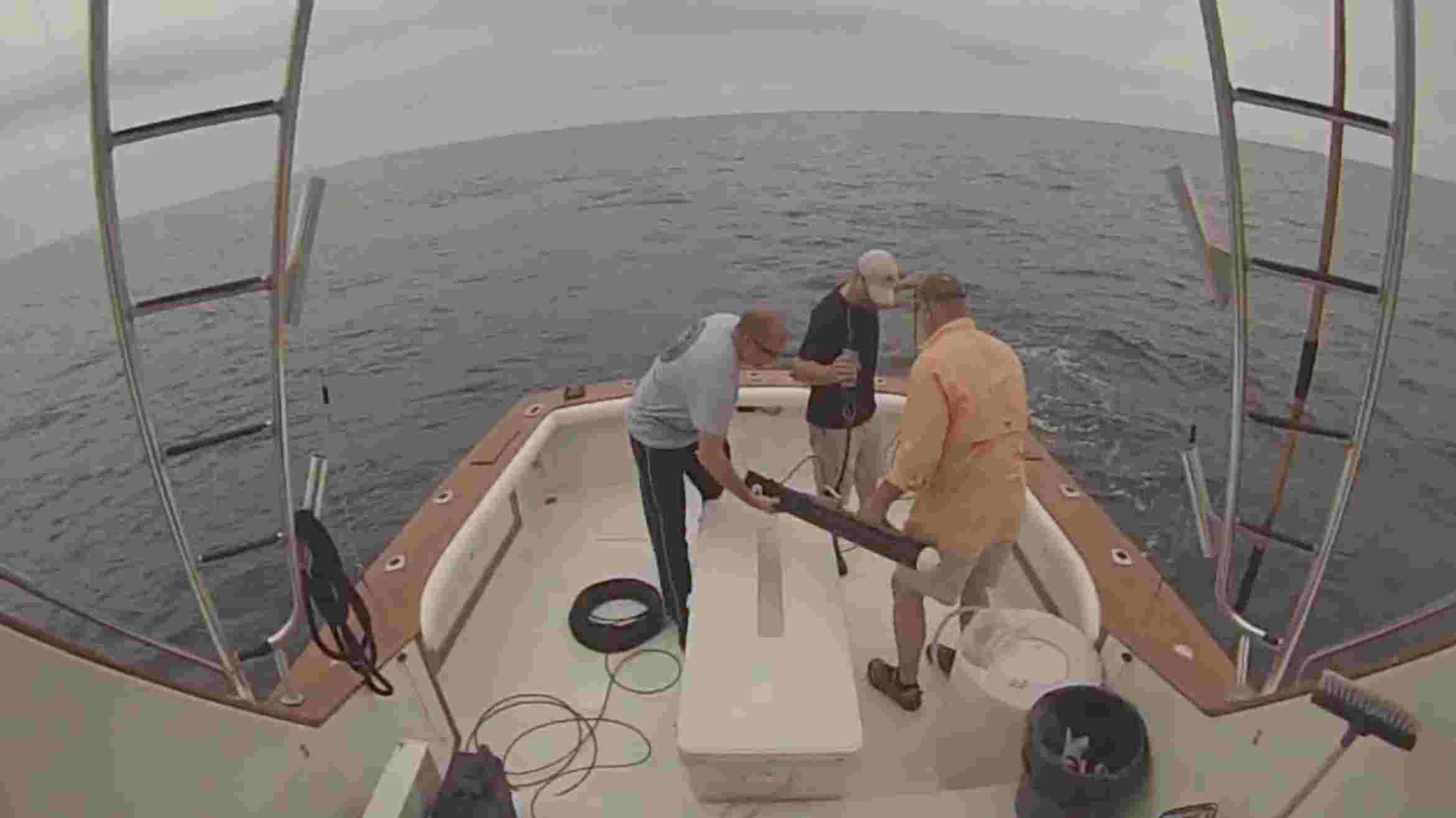June - SCOUTING AROUND FOR ULTRA HIGH RESOLUTION AUV SIDE SCAN
By: Regan Lipinski
Training Manager, Marine Sonic Technology, Ltd.
The need for systems that can provide visibility in the world of underwater research is exploding. Many fields of study are expanding, with new missions and applications where underwater visibility is required multiplying every day. In the past, most of the general public had no idea what it took to do underwater rescue or research or what a complicated task working under the water is. It is now fairly routine for the general public to see images of the types of technology used in underwater search and research in the media. Terms like Autonomous Underwater Vehicle (AUV), Unmanned Underwater Vehicle (UUV), Remotely Operated Vehicle (ROV) and Side Scan Sonar are becoming more familiar after the horrific events of Flight 370 in Malaysia and other over-water tragedies. Over the last several months, as the search unfolds before our eyes on prime time television, it is hard not to pay attention as scientists proposed many “new” technologies and strategies to locate the Boeing 777.
Click for video
When I say “new” technologies, I only mean new to the general public. Technologies like Side Scan Sonar have been around for quite some time. They have improved greatly through the years, and today’s sonars are better than ever with things like CHIRP (Compressed High Intensity RADAR Pulse), which gives better resolution and greater range, almost twice that of standard digital sonars. The images are amazing, with near photographic resolution using Ultra High Frequencies like that of Marine Sonic Technologies’ 1800 kHz transducers, which are the highest side scan frequencies on the market today. Researchers can now really see what’s under the water.
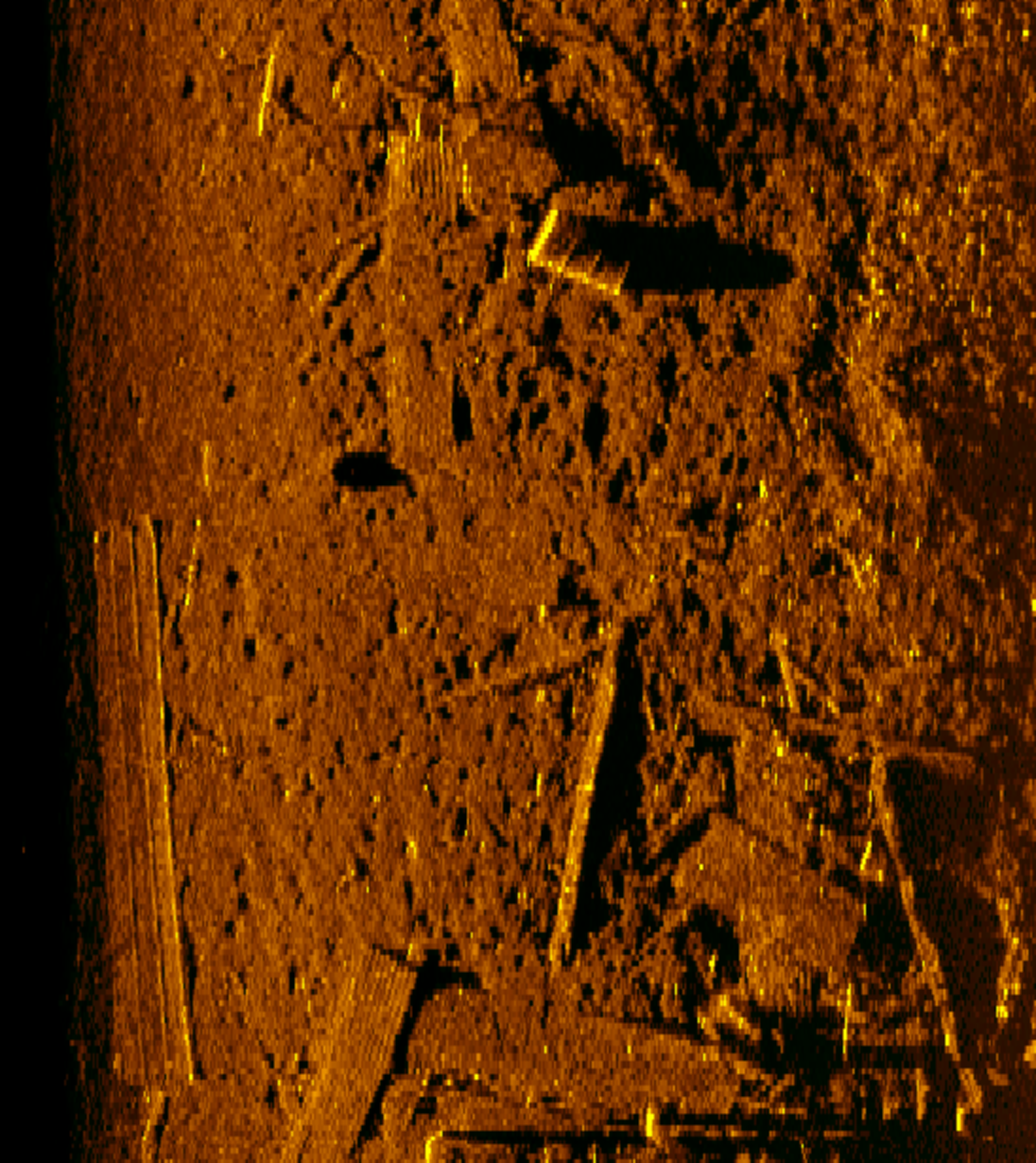 |
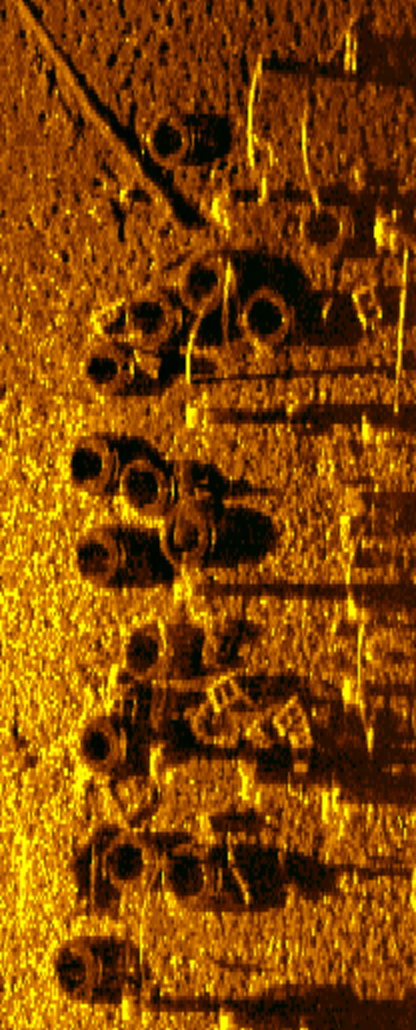 |
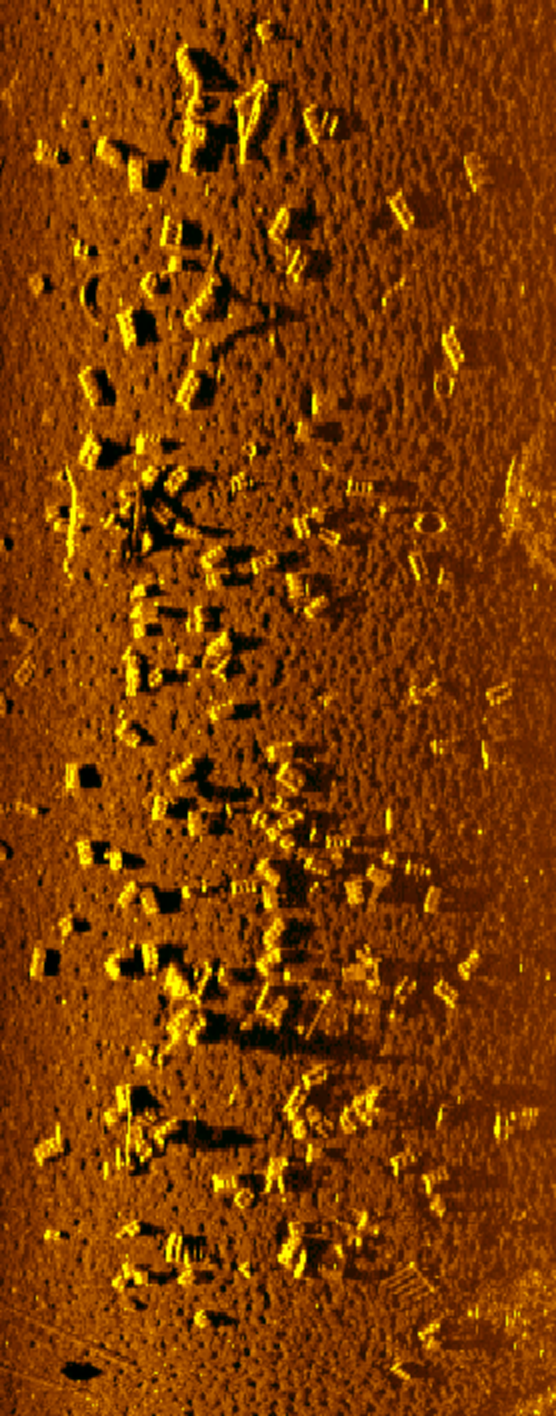 |
As the recent past has shown us, these underwater missions and technologies are vital; they are here to stay, and they are expensive. Researchers need to get the best technology they can for their research dollars. Scientists need to cram as many sensors and as much technology as they can onto these “seekers of the deep” so that they can get everything they need in one deployment of a UUV. Space on these UUVs is limited, as is power consumption, making it vital that each system deployed on this valuable real estate provide the best data possible.
To address this concern, Marine Sonic Technology, Ltd. has developed the “ARC Scout.” The ARC (Adaptive Resolution CHIRP) line of products was introduced in January of 2013 with the ARC Explorer, Marine Sonic Technology’s high-resolution towed sonar. The ARC Explorer has quickly become the towed sonar everyone else wants to beat and copy. With its billet aluminum body, modular configuration, interchangeable CHIRP transducers, rugged shock-resistant housing, wet mate connectors, integrated variable angle bracket, and more bells and whistles than can be mentioned here, it is the towed Side Scan Sonar of the future.
Marine Sonic Technology, Ltd. knew it had to provide the same technology to our customers in the AUV, UUV, and ROV markets. Our Engineering team set out to do the nearly impossible—create a CHIRP sonar that has the smallest footprint on the market while decreasing the vital and very valuable power consumption. They developed a small device affectionately called “The Cube.” It measures only 9.9 cm wide x 9.4 cm long x 5.6 cm high and is also available in another configuration that is 9.9 cm wide x 18.7 cm long x 3.8 cm high—the smallest all-inclusive CHIRP Sonar on the market today.
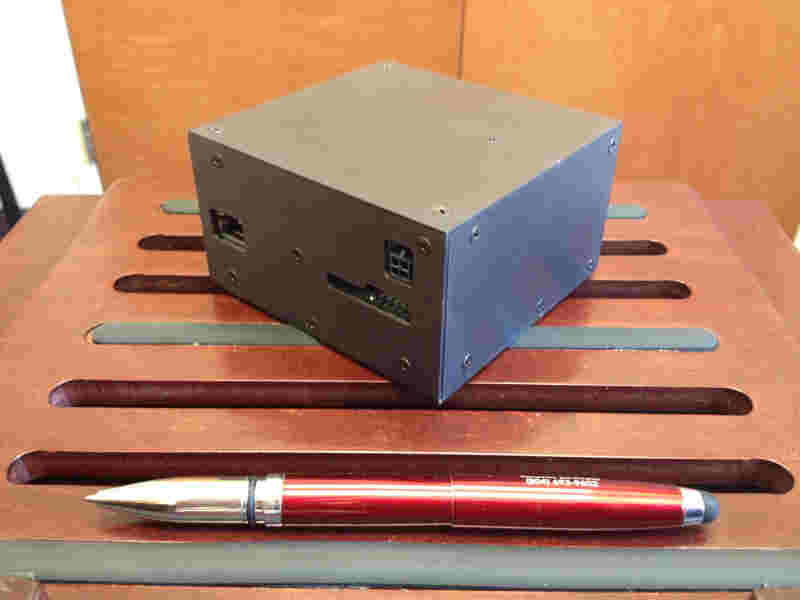 |
| ARC Scout size comparison to pen. |
Naming the “Cube” was easy. What else besides a “Scout” ventures into unknown territory and collects data on its surroundings? Just like a “Scout” it carries everything it needs in one small neat package. Virtually plug and play, everything needed is built right into the cube—just plug it into the onboard computer using 10/100 Ethernet, Isolated RS232 Serial, and TTL Sync-in/out. Plug in the hull-mounted dual-frequency transducers and you’re ready to go. The Scout’s extremely small size frees up valuable payload space inside the vehicle for other additional sensors. Not only is the ARC Scout size comparison to pen. Screen shot examples of ARC side scans. Ocean News & Technology June 2014 12 FEATURE STORY Scout small, it consumes very little power. How low is still a secret, but I can assure you, you will barely notice it’s there. The power consumption can be dynamically tailored to the specific needs and requirements of the mission and will never exceed 30 W.
The ARC Scout comes with your choice of Adaptive CHIRP, Dual Simultaneous, and Dual Frequency transducers, either 600/1200 or 900/1800kHz. The CHIRP bandwidth is 50 kHz to 200 kHz with a CHIRP length of <1 ms. The maximum image ranges per side are 600 kHz: 130 m; 900 kHz: 80 m; 1,200 kHz: 45 m; and 1,800 kHz: 25 m.
Marine Sonic Technology, Ltd. has recently moved into a new, state-of-the-art facility in Yorktown, Virginia. We are a long established company and our products are designed, manufactured, and assembled in house at our new headquarters in Yorktown. The new building allows for expansion in the research and development departments and makes way for new technologies in our manufacturing processes, allowing us to expand our production and test capabilities. Our streamlined design and manufacturing process allows us to keep prices low and makes the best side scan sonar on the market today available to all customers regardless of budget.
Marine Sonic Technology, Ltd. is committed to providing the best solution possible to each customer based on their mission needs. We strive to support our customers both by phone and in the field. Customers come first. We will commit to as much time as it takes to support customer missions. When you call for technical assistance, you get answers from a support team that has worked in the field and understands the difficulties of collecting data in harsh conditions. You will get answers from one of our trainers who has years of experience in the field running the equipment or from one of the engineers who designed it. You will be able to contact them anytime, 24 hours a day 365 days a year, to make sure your mission runs smoothly. You will know someone took time in the design and construction of your system, tested it multiple times before sending it to you, and cares deeply that it functions as specified. Our products go through several checks prior to leaving our facility; and, at each station, the engineer involved has the customer’s full information and verifies that the system he is working on is customized specifically for the customer’s needs. We are so confident of the quality of our products that we provide you with a full 3-year warranty.
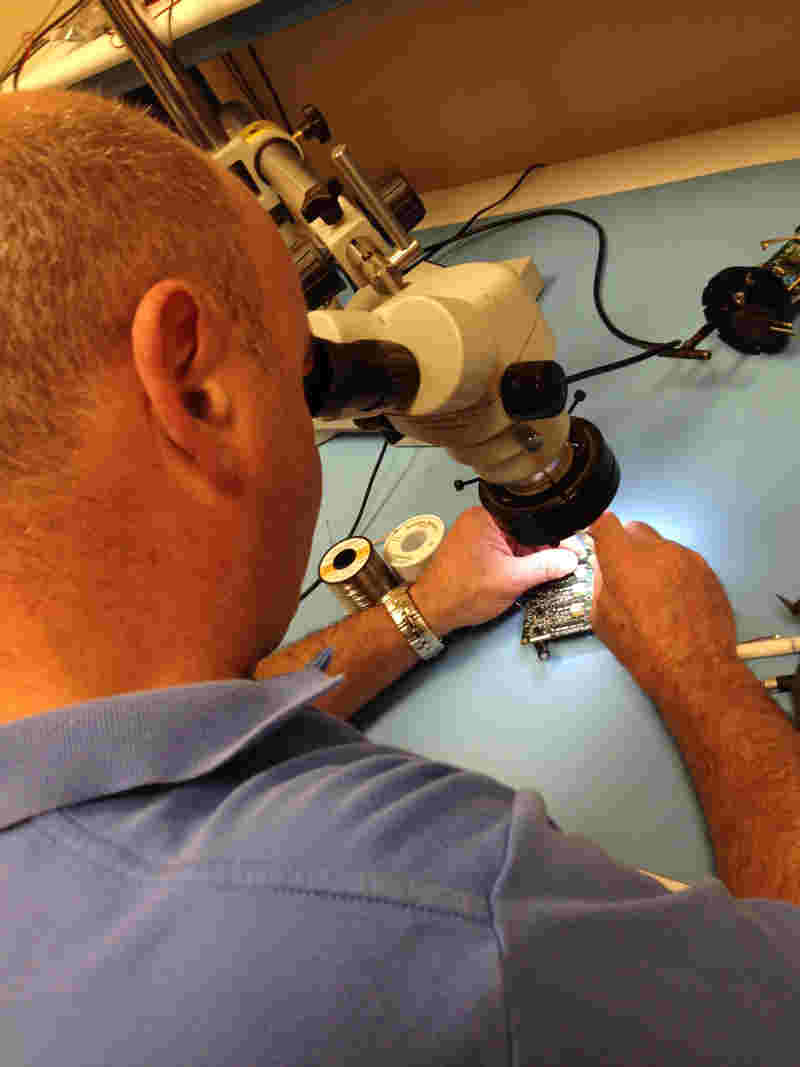 |
| Chief Engineer Alex Berelovich Working on ARC Scout. |
Marine Sonic Technology, Ltd. is a privately held corporation incorporated in Virginia. Marine Sonic Technology’s CEO, Martin H. Wilcox, graduated with a Bachelor of Science in Electrical Engineering (B.S.E.E.) from The Moore School of Electrical Engineering at the University of Pennsylvania, Philadelphia in 1966. In his early career, he worked in digital computer design for radioisotope tomographic scanning; hand-held, battery-operated doppler ultrasound diagnostic devices; and developed design advances for static B-mode scanners.
In 1972, he and a partner started Advanced Diagnostic Research Corporation (ADR®) in Tempe, Arizona. His engineering designs at ADR® led to the introduction of one of the earliest commercially available linear-array real-time scanners that first debuted in 1973. The scanner, which set the standard for subsequent designs, was the first “good-resolution” linear-array scanner suitable for abdominal and obstetrical scanning in the commercial market.
Marty Wilcox was out of the “medical” ultrasound field by 1982 when ADR® was sold to the Squibb Corporation®. He was constrained by the sale contract from working for any medical ultrasound company for a period of years, so he moved on to trying to improve technology in underwater sonar imaging systems and eventually established a new company, Marine Sonic Technology, Ltd. based in Virginia in 1993. Much of Marine Sonic Technology’s initial underwater scanner technology evolved from the lessons learned in the development of medical ultrasound. For his inventiveness and contribution to the development of medical ultrasound, he was awarded the Ian Donald Gold Medal for Technical Merit in 1993 by the International Society of Ultrasound in Obstetrics and Gynecology.
Mr. Wilcox has used his experience in the medical world to design highly efficient, low-power transducers that produce the extremely high-quality underwater images we see in today’s side scan sonar images. Marine Sonic Technology, Ltd. continues to design highly technical underwater systems using the latest advancements in sonar. The team of engineers led by Mr. Wilcox and Chief Engineer Alex Berelovich at Marine Sonic Technology, Ltd. are some of the best in the field and are consistent in developing cutting-edge new technologies in the advancement of underwater sonar imaging.
For more information on Marine Sonic Technology, Ltd. or to set up a demonstration on any one of our systems, please call us at (804) 693-9602 or visit us our website at www.MarineSonic.com.

